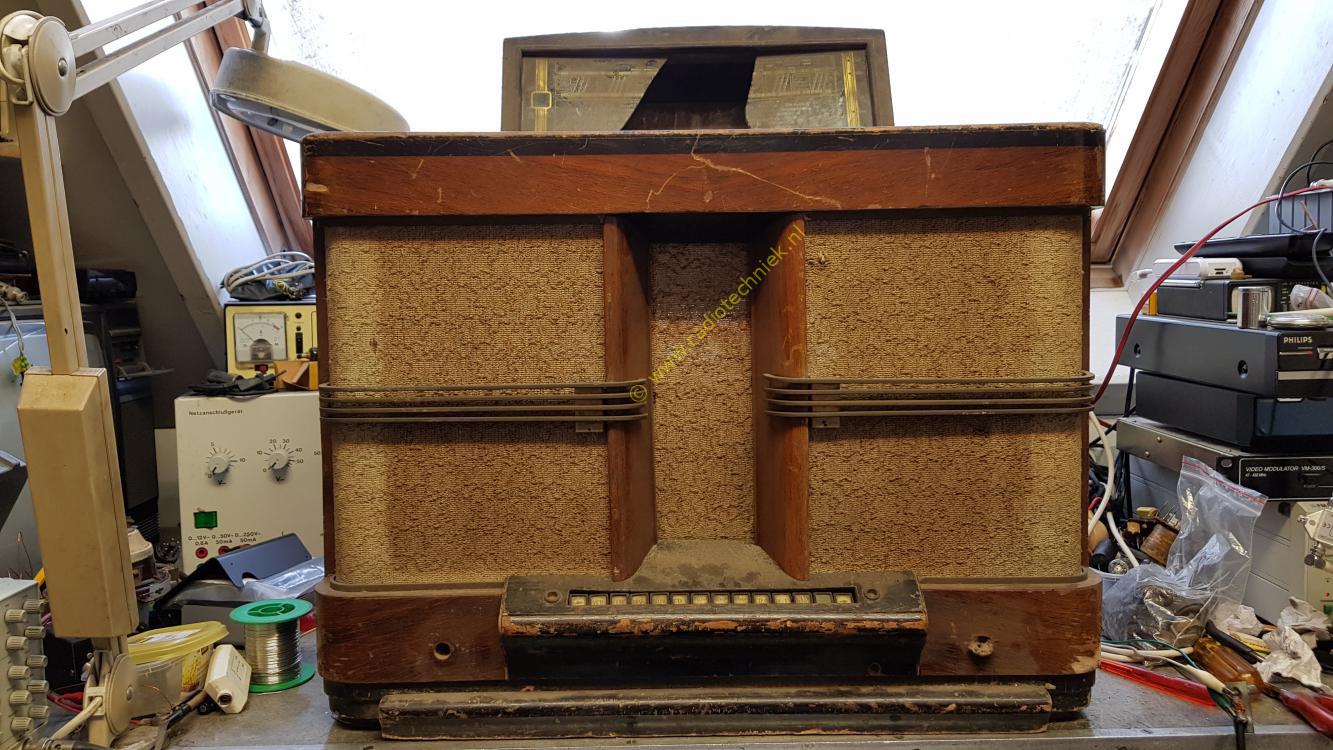
A Philips 850A. What was once a beautiful stately radio device is now no more than a wreck. What could we make of this radio?

The speaker cloth of this radio was original. No one on the auction site had seen that. For me this was the reason to buy this beautiful radio device.

Another terrible drama. There should be 5 bars on both loudspeaker grilles. the bottom of both sides is missing.

Here you can clearly see how one corner has been knocked out of the cabinet. Replacing the bottom plate is the only option.

The bottom plate consists of two parts, the lower part is good and usable. The second part is plywood. This part has been worked with the ax but has also been completely under water. Where the layers of the plywood had come loose. And the whole of misery fell apart.

A new chassis from the production line. Also a new push button unit. And a new power transformer. And on the right the new motor drive. Beautiful, isn't that production of the year 1938.

The coil buses together on the left, the two high-frequency stages on the right, the oscillator section.

To place the shift rod for the wave range switching, the oscillator coil had to be removed from the chassis.

The chassis had to be removed from the repair stand. Otherwise, the switching rod for the wave range switching could not be placed.

Here you can see how tight it fits. The shift rod of the waveband switching just passes the ceramic capacitor.

Meanwhile, the drive mechanism of the engine tuning has also been installed. And the chassis is equipped with new tubes. Unfortunately not the EM1 which has been made unaffordable by handy Harry.

The chassis with a few new buttons. And the coupling between the drive and the mechanical memory of the motor tuning.

This video shows the operation of the engine tuning. Unfortunately, medium wave stations cannot be received well here. At the time of making the movie.

The next problem is the dial hood. The dial pointer is projected as a light image on the dial. This makes the setting of the dial pointer very precise.

And yes this is the same cabinet. There are people who can restore this so beautifully. And unfortunately I am not. But whoever did this cabinet is an insane craftsman.

But finally the chassis is in place and the feet under the chassis have marked the place in the bottom shelf of the cabinet.

Unfortunately, a piece of the aft bulkhead is missing. But we are still looking for a solution for that.
























































































































